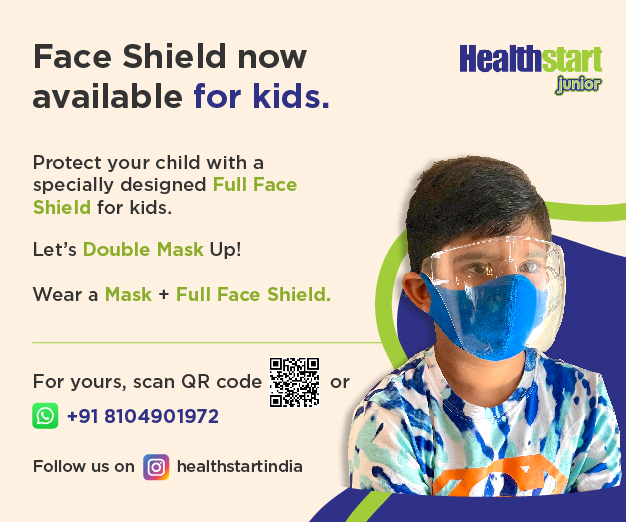Disturbingly, a large and growing number of children and adolescents in India are suffering mental health disorders. A World Health Organisation (WHO) report released last year says that one in four early teens in India suffers depression – Geetha Rao
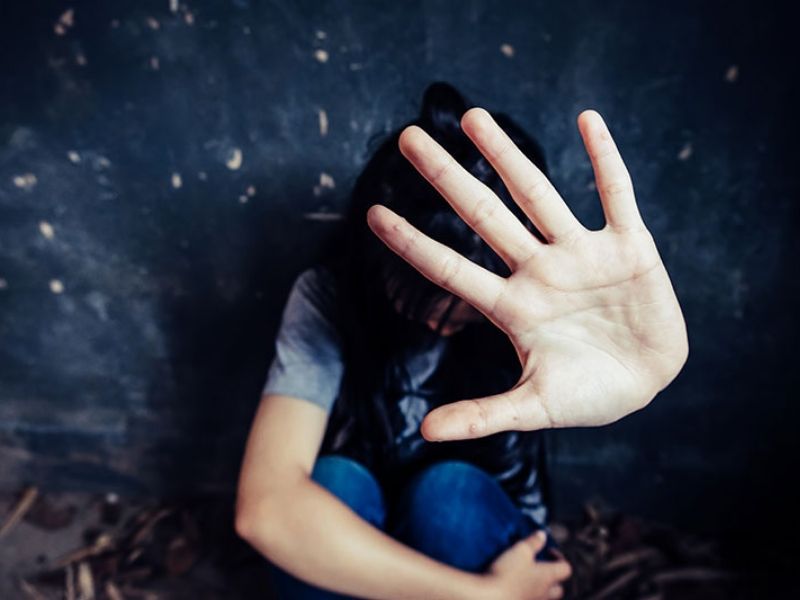
Kavya Rao (14), a class IX student in Mumbai, was a class topper and an excellent vocalist loved by her teachers and peers. But three weeks ago, her parents visited a counselor because she suddenly stopped speaking with friends, became withdrawn and aloof, sluggish, started weeping irrationally and neglected her meals and sleep. Following three sessions with a psychiatrist, Kavya was diagnosed with depression.
Manish Mehta (14), also a class IX student in Mumbai, was admitted to hospital with complaints of excessive, super-speed speech, vainglorious boasting, becoming abnormally friendly with strangers, and demanding expensive laptops and cell phones. His parents reported to the psychiatrist that he was “always restless and started numerous activities without completing any of them”. Manish was diagnosed with mania — a bipolar disorder characterised by sustained periods of abnormal mood swings and exaggerated behaviour.
Kavya and Manish are typical of a disturbingly large and growing number of adolescents in India suffering mental health disorders. A World Health Organisation (WHO) report released last year says that one in four early teens in India suffers depression. According to WHO’s Mental Health Status of Adolescents in South-East Asia: Evidence for Action (2017), a quarter of adolescents in India in the 13-15 age group suffer from depression. The report reveals that 11 percent of adolescents countrywide are “distracted”; 8 percent are anxious and suffer consequential sleep disorder; 8 percent experience loneliness most of the time; and 10 percent are unable to forge friendships.
The National Mental Health Survey 2015-16 (NMHS), conducted by the highly reputed National Institute of Mental Health & Neurosciences (NIMHANS), Bangalore under the purview of the Union ministry of health and family welfare, endorses this alarming phenomenon of creeping adolescent depression. NMHS 2015-16 highlights that 9.8 million teenagers in the age group 13-17 years suffer depression and other mental health disorders and are “in need of active intervention”. The study found that prevalence of adolescent depression is highest in metro cities, and comparatively less in small town and rural India.
“India is confronted with a childhood-adolescence mental health crisis. With stressful peer pressure, high parental expectations, breakdown of traditional family structures, and incremental technology dependence forcing lifestyle changes, a rising number of children and adolescents are finding it difficult to cope with the burden of the pressure to excel and continuous scrutiny. Moreover with parents mostly ignorant about mental health issues and social stigma surrounding psychological disorders, most adolescents grow up with mental health illnesses and transform into dissatisfied and maladjusted adults,” says Dr. K. John Vijay Sagar, professor of child and adolescent psychiatry, NIMHANS.
According to Sagar, almost 30-40 percent of adults in the 20-30 age group suffering mental health problems had a history of depression during middle school and adolescent years. “Almost half the adults suffering mental health disorders experienced the onset of illness before age 14. Regrettably, 90 percent of children and adolescents countrywide who suffer psychological problems don’t receive proper evaluation, diagnosis and interventions due to lack of awareness, fear of social stigma and shortage of qualified mental health professionals,” he adds.
Signals and symptoms of mental health disorders manifest early in childhood. Among preschoolers and primary school children, for instance, the problems are mostly behavioural ranging from high separation anxiety, opposition to authority figures and misconduct, phobias (fear of animals, heights, water) to ADHD (attention deficit hyperactivity disorder). ADHD children experience problems with executive functions which result in difficulty with controlling impulses, sustaining attention, regulating emotions, memory and cognitive flexibility. In turn, this adversely affects social skills, academic performance, completion of tasks, problem solving, organisation and emotional expression. Unfortunately because of lack of awareness about ADHD, parents seek professional help only when students’ academic performance dips. All other problems are swept under the carpet as bad behaviour and indiscipline.
“ADHD is a commonly reported disorder among children. But because of lack of parental awareness about this disorder, children who can’t sit still, never seem to listen, don’t follow instructions, or who blurt out inappropriate comments, are labeled troublemakers, or criticised for being lazy and undisciplined. Parents should be observant of their children’s behaviour and report to a doctor if a child displays persistent inattention, hyperactivity, and impulsivity. If ADHD is not diagnosed and treated in time, it can lead to development of major behaviour problems including criminality, poor social and employment adjustment and relationship issues, and sometimes, substance addiction,” warns Dr. Ramprasad Attur, consultant psychiatrist at the Tenderminds Clinic, Mysore and a visiting psychiatrist at Sheffield CAMHS, UK.
The most common and widely reported children’s mental health problem is depression. In the new age of social media and constant scrutiny, adolescents in particular are finding it increasingly difficult to cope with the burden of peer, parental and social pressure to excel in academics, careers and personal relationships. This is aggravated by the emergence of a relatively new phenomenon of double income nuclear families which require children to return from school to empty homes. According to the WHO report quoted earlier, a fifth of adolescents in India report low levels of parental engagement.
“Although children growing up in nuclear double-income households in urban India and attending top-ranked private schools, have access to round-the-clock entertainment and the latest gadgets and gizmos, many of them are experiencing emotional and behavioural problems. Even though their parents provide high quality food, clothing and shelter, they are emotionally uninvolved in their children’s lives. This new parenting is as damaging as over-parenting and micro-managing children’s lives. Children need attention, guidance and nurturing during the early years, and particularly the tumultuous teen years. Parents need to devote time, love and attention to children to enable them to develop into happy and mentally stable adults,” says Dr. Yesheswini Kamaraju, psychiatrist and director of The Reach Clinic, Bangalore.
Likewise Dr. Aarti Rajaratnam, director of the Child Guidance Centre and Counseling Clinic, Salem/Chennai, whose high-quality child-rearing, parenting and medical advice is highly appreciated by ParentsWorld readers, believes that it’s very important for parents to discharge their parenting duties diligently to protect children against depression and related behaviour problems. “During the course of my 18 years counseling practice, I have interacted with many neglectful parents who demand quick-fix solutions for their children’s behavioural problems and academic under-performance. But the plain truth is that quality family time and parent-children relationships can’t be replaced by gadgets, extracurricular classes and expensive gifts. It’s a common misconception that schools and hobby classes can provide everything from academic skills to values education to children. But when parents outsource their critical duties and roles to service providers, sustained neglect disables children from building and sustaining relationships in adulthood. Casual parenting has disastrous consequences for children who tend to grow up with emotional and personality disorders,” says Rajaratnam.
The breakdown of traditional family structures which has deprived nuclear family children of the support of caring elders, is compounded by the emergence of the Internet and social media which makes its own demands on adolescents to strive for popularity and perfection. This has led to an increasing number of adolescents suffering body image issues defined “as a person’s perception of physical self and the thoughts and feelings, positive, negative or both, which result from that perception” by the National Eating Disorders Collaboration (Australia). Growing body image obsession is prompting millions of teens worldwide to resort to frugal diets and punishing exercise routines which have adverse physical and psychological consequences. A study published in the International Journal of Humanities, Arts, Medicine and Sciences (August 2016) on the ‘Prevalence of eating disorder cognitions among Indian adolescent girls’ found that 70 percent of 1,080 girl children aged 11-19 years surveyed had an “eating concern, 60 percent were troubled by their weight and 54 percent by their body shape”. Around 41 percent were under-weight because of self-starvation.
“A rising number of parents are consulting with us to help their children cope with body image issues. Eating disorders, which do not reach the diagnostic threshold of anorexia or bulimia, are common as is fall in academic performance and self-esteem. Moreover, sensitive teens often withdraw from social life and suffer severe anxiety and depression,” says Dr. John Vijay Sagar.
Against this backdrop of rising incidence of mental and psychological disorders among the nation’s youth, professional care givers advise parents to become involved, observant and vigilant about their children’s offline and online lives and activities. They also advise school promoters and principals to establish counseling departments to help parents and children report behaviour problems and facilitate early detection of children’s mental health disorders.
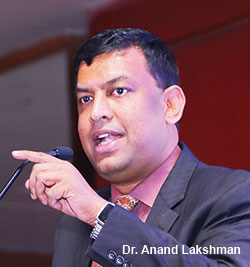 “The first step towards addressing the children’s mental disorders crisis which is spreading across the country is to increase parental and teacher awareness about the stress and pressure that children are experiencing in the increasingly complex digital age. Given that children spend almost eight hours in school everyday, schools and teachers should be in the forefront of the fight against the mental health crisis confronting our children and adolescents bearing in mind that it’s much easier to build strong children than repair broken adults. Mental, social and emotional well-being is the prerequisite of children realising their full potential in academia and later in their workplaces,” says Dr. Anand Lakshman, an alumnus of the Tata Institute of Social Sciences, Mumbai and founder-CEO of AddressHealth Pvt Ltd, a Bangalore-based company (estb.2010) which offers school healthcare services including physical and mental health check-ups, pediatric care and parent/teacher awareness programmes to 225 schools in Bangalore, Delhi, Hyderabad and Pune.
“The first step towards addressing the children’s mental disorders crisis which is spreading across the country is to increase parental and teacher awareness about the stress and pressure that children are experiencing in the increasingly complex digital age. Given that children spend almost eight hours in school everyday, schools and teachers should be in the forefront of the fight against the mental health crisis confronting our children and adolescents bearing in mind that it’s much easier to build strong children than repair broken adults. Mental, social and emotional well-being is the prerequisite of children realising their full potential in academia and later in their workplaces,” says Dr. Anand Lakshman, an alumnus of the Tata Institute of Social Sciences, Mumbai and founder-CEO of AddressHealth Pvt Ltd, a Bangalore-based company (estb.2010) which offers school healthcare services including physical and mental health check-ups, pediatric care and parent/teacher awareness programmes to 225 schools in Bangalore, Delhi, Hyderabad and Pune.
Childhood depression symptoms
If one or more of these tell-tale behavioural traits are noticed in children and adolescents, parents should seek 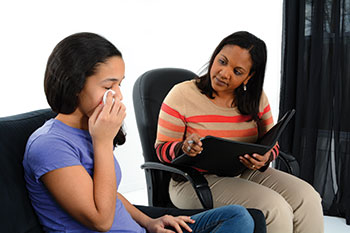 professional help
professional help
- Melancholy, tearfulness, weeping bouts
- Hopelessness
- Decreased interest in socialisation, loss of interest in previously favourite activities
- Persistent boredom, low energy
- Social isolation, poor communication
- Low self-esteem
- Extreme sensitivity to rejection, failure
- Irritability, anger, hostility
- Difficulty in managing relationships
- Frequent complaints of physical illnesses such as headaches and stomach pain
- Frequent school absenteeism, falling learning outcomes
- Poor concentration
- Major changes in eating and/or sleep habits
- Threats and efforts to leave home
- Greater interest in self-destructive behaviour narratives
COMMON CHILDHOOD ANXIETY DISORDERS
Child anxiety disorders often co-occur with depression, eating disorders and other behavioural problems, and affect one in eight children worldwide. If untreated, anxious children fall behind in class, fail to make friendships and other social relationships and are quite likely to indulge in substance abuse as teens/adults. Common childhood anxiety disorders include:
General anxiety disorder. Excessive and continuous anxiety over a gamut of things such as school work, exam results, peer and family relationships.
Separation anxiety. Children who become upset when separated even briefly from parents and caregivers. This disorder is common in young children. If it persists, it can become very difficult to settle them in nursery or primary school.
Social anxiety disorder. Also known as social phobia, this is characterised by a strong dread of social and performance-related events and activities such as conversing with peers or facing the classroom for a presentation.
Selective mutism. Some children often refuse to speak on social occasions and in public. This inhibits them from making friends and often results in depression and loneliness.
Obsessive-compulsive disorder. OCD is characterised by disturbing obsessions and the compulsion to repeatedly perform particular actions to try and ease anxiety.
Specific phobias. When children express intense, irrational fear or sudden panic related to a specific object, persons and pets. Common childhood phobias include animals, storms, heights, water, blood, darkness and medical procedures.
COPING WITH ANXIETY DISORDERS
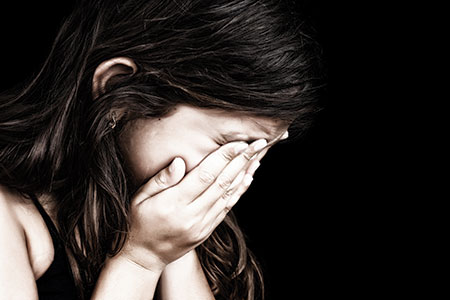 Here are a few simple things you can do to help your child cope with anxiety disorder
Here are a few simple things you can do to help your child cope with anxiety disorder
- Investigate why she is stressed and pay attention to her needs
- Remain calm when your child becomes anxious
- Always acknowledge and praise your child’s smallest achievements
- Don’t repeatedly lecture children for failure or low grades. Instead, identify the areas in which they need to improve, and guide them.
- Try to maintain normal daily routines while being flexible
- Don’t be averse to breaking monotonous daily routines
- Monitor children’s social media interactions and updates
- Involve them in important family discussions
- Seek professional help if required
(Dr. Manjiri Deshpande, paediatric psychiatrist, The Paediatric Network, Mumbai)


















